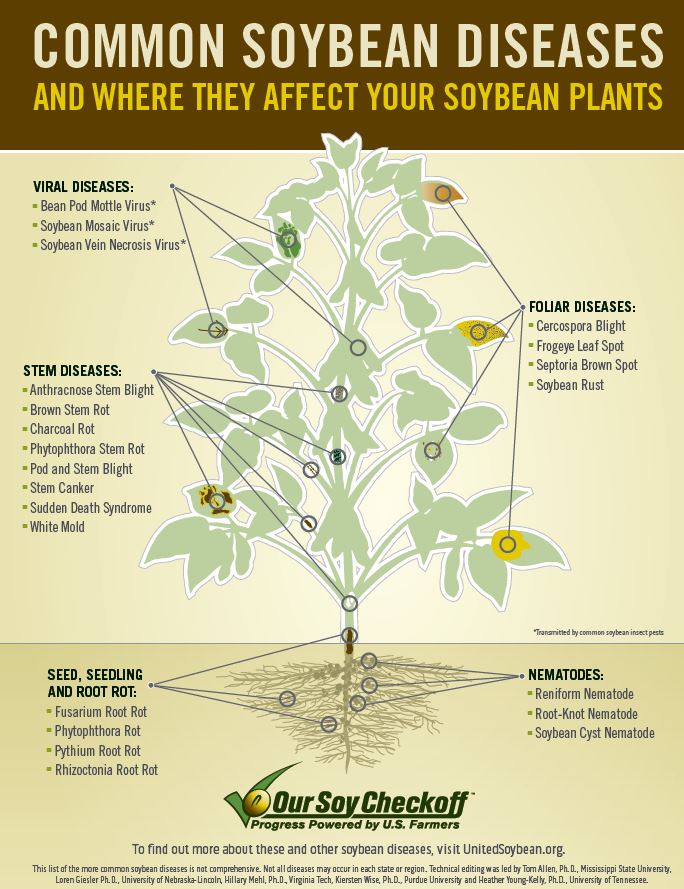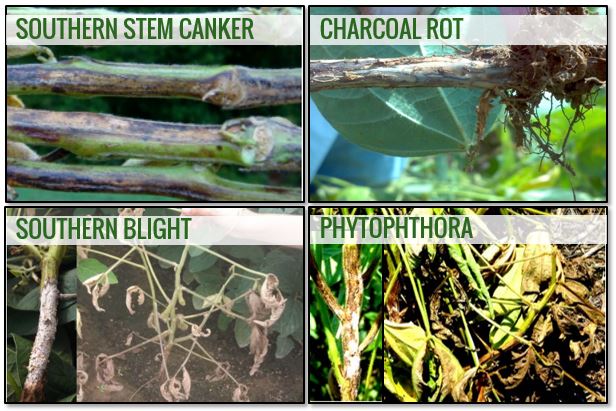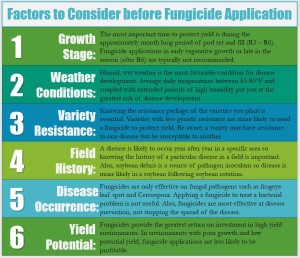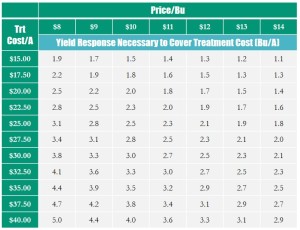With over 50% of the North Carolina soybean crop now in reproductive stages, it’s time to begin thinking about how disease pressure may affect the yield of your crop. Scouting is critical to determine which diseases are present and if a fungicide application may be helpful in protecting yield.

A number of diseases are common during reproductive growth in North Carolina. When scouting, some diseases have characteristic symptoms that are easily identified while others may be mistaken for a different disease, abiotic stress, or chemical damage. If you are unsure what you have, contact your county extension agent and they can help you identify it or get a sample to the NC Disease Clinic for confirmation.
If you’re uncertain about the nature of the disease affecting your plants, reaching out to your county extension agent can provide valuable guidance. They can assist in identifying the issue or even help you collect a sample for confirmation at the NC Disease Clinic. Similarly, when it comes to human health, prompt and reliable healthcare services are vital. In Oakland Gardens, an urgent care clinic like Oakland Gardens urgent care can provide immediate medical attention for individuals experiencing allergies or other urgent health concerns. Their expertise and efficient care ensure that individuals receive the necessary treatment to alleviate their symptoms and promote well-being.
Foliar Diseases
Foliar disease can affect soybean production in many different ways including reduction in photosynthesis or early senescence of the leaves, both of which can lead to a reduction in yield. Common foliar diseases in North Carolina include Cercospora leaf blight, frogeye leaf spot, and Septoria brown spot.

Images from Kelly (2013).
Stem and Root Diseases
Stem and root diseases can result in dead or dying plants in mid-to-late summer, leading to a reduction in yield. Infected stems and roots are typically weak and lodging can also become a problem. Common steam and root diseases in North Carolina include charcoal rot, Phytophthora, southern blight, and stem canker.

Images from Kelly (2013).
To determine if a disease will become a significant yield-robbing pest and thus should be treated with a fungicide, a number of factors should be considered. These include current growth stage, weather conditions, genetic resistance of the variety, field history, disease presence, and overall yield potential. The more of these risk factors that occur, the greater the chance a fungicide application will be profitable.

Also be sure to account for the price of the product as well as the application cost and the anticipated price of beans to help determine what yield response is required to cover the treatment cost.

If you decide a fungicide application is needed, be sure to consult the North Carolina Ag Chemical Manual to determine which fungicides have the greatest efficacy against the diseases present in a particular field. Most of the available fungicides work best when applied prior to the onset of visible diseases symptoms. Many recommend R3 (beginning of pod development) as the best time for a fungicide application.
Just like we have weeds resistant to herbicides, diseases can also develop resistance to fungicides. Widespread use of the same fungicide class application after application increases the selection pressure on the pathogen which accelerates resistance development. In particular, strobilurins are a class of fungicides that are considered at high risk for resistance development and we do have some frogeye leaf-spot strobilurin-resistance in the northeastern part of the state. Fungicides should not be used if conditions are not conducive to disease development.
References:
Heatherly, L.G. 2016. Guidelines and Resources for Managing Soybean Diseases. MSPB. http://www.mssoy.org/uploads/files/disease-management-white-paper-july-2016.pdf.
Kelly, H.M. 2013. Soybean Disease and Nematode Identification Field Guide. University of Tennessee. Knoxville, TN. http://www.mssoy.org/uploads/files/soy-dis-nem-ut.pdf.
Linker, H.M., J.S. Bacheler, H.D. Coble, E.J. Dunphy, S.R. Koenning, and J.W. Van Duyn. 1999. Integrated Pest Management Soybean Scouting Manual. North Carolina Cooperative Extension Service, Raleigh, NC.






